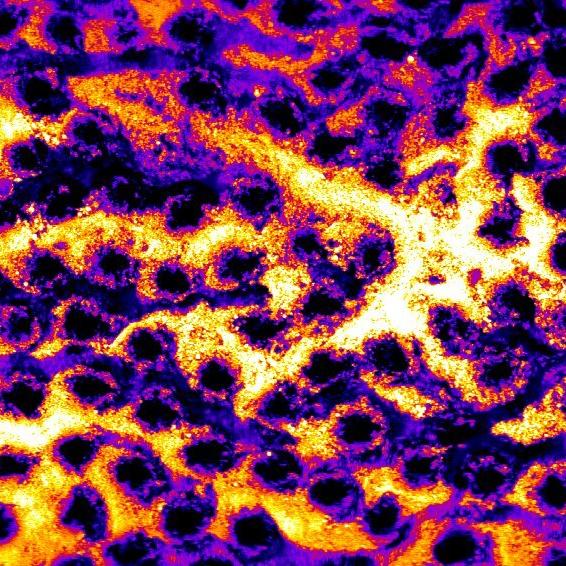
Image credit: Navid Bizmark
Our lab has developed the ability to directly image complex fluid transport in situ in 3D porous media. We use this multi-scale visualization to probe how complex fluids—polymer solutions, particulate dispersions, and immiscible fluid mixtures—squeeze through tight spots of a complex porous medium. As they are transported, the fluid microstructure deforms, resist deformation, and thereby alter subsequent flow in turn. Guided by these findings and studies of dynamic networks, we develop theoretical models that describe how these coupled effects influence macroscopic fluid transport. Our main thrusts and research questions include:
- Viscoelastic flow instabilities. The elasticity of polymer solutions can generate chaotic turbulent-like flows in porous media. What are the characteristics of these flow instabilities? Under what conditions do they arise? How are they influenced by the properties of the solution and medium, as well as operating conditions? And how can we harness these phenomena for applications e.g., homogenizing flow in heterogeneous media, removing trapped contaminants, and improving chemical reaction kinetics and yield in porous flow reactors?
- Particulate transport. The interplay between hydrodynamic stresses and colloidal interactions can dictate the spatial distribution of colloidal particles in a porous medium. How are these processes influenced by the properties of the particles and medium, as well as operating conditions? How do they influence interactions with other additional immiscible fluid phases? And how can we use these insights for in situ control of transport and chemical processes, mediated by particles, in porous media?
These results are helping to shed light on the multi-scale interactions between complex fluids and porous media that have traditionally been represented in black-box models using “lumped” empirical parameters. Ultimately, our goal is to develop guidelines for the application of existing complex fluids, as well as principles for the formulation of new fluids, in controlling transport and chemical reactions in water remediation/filtration, subsurface carbon sequestration, and other industrial and environmental processes.
